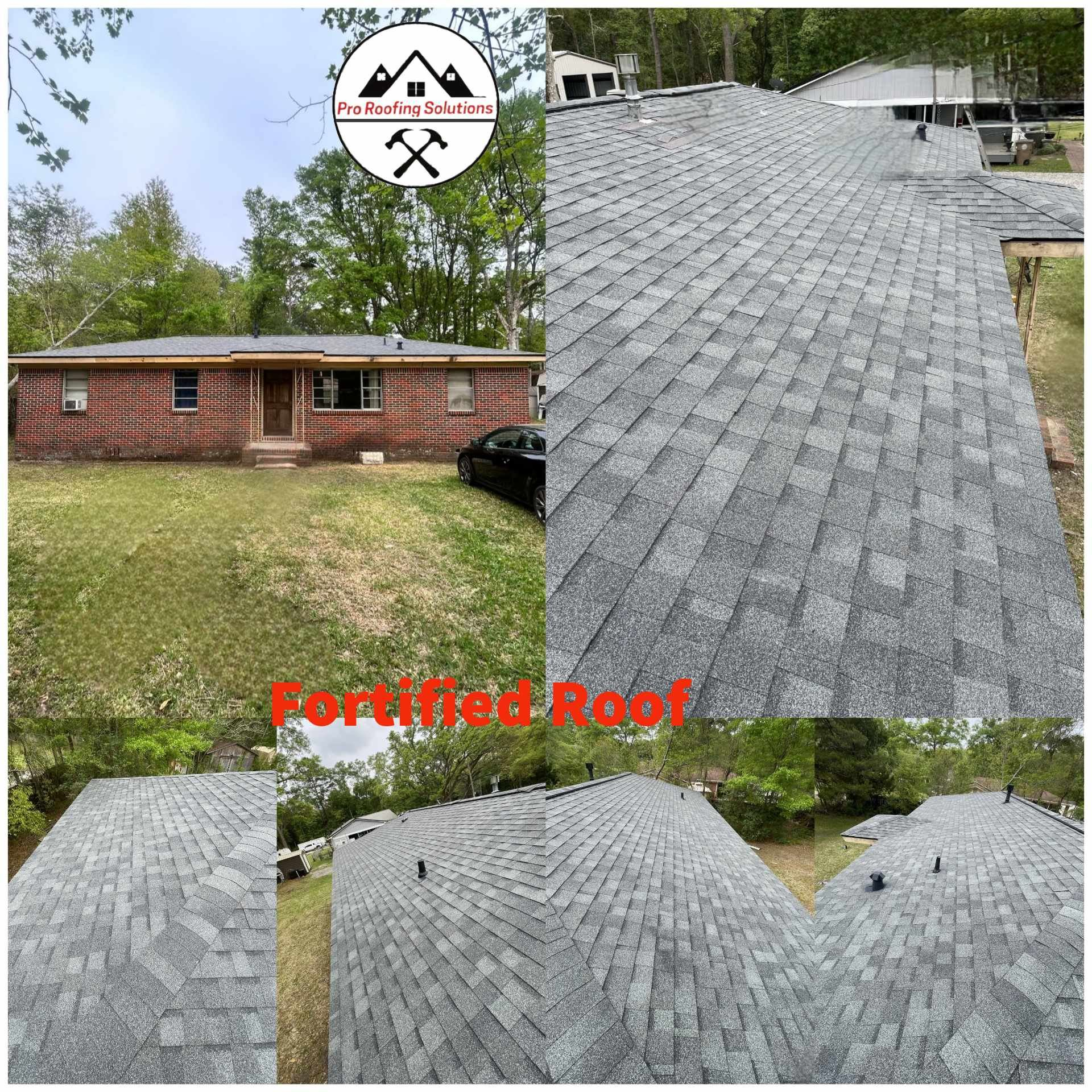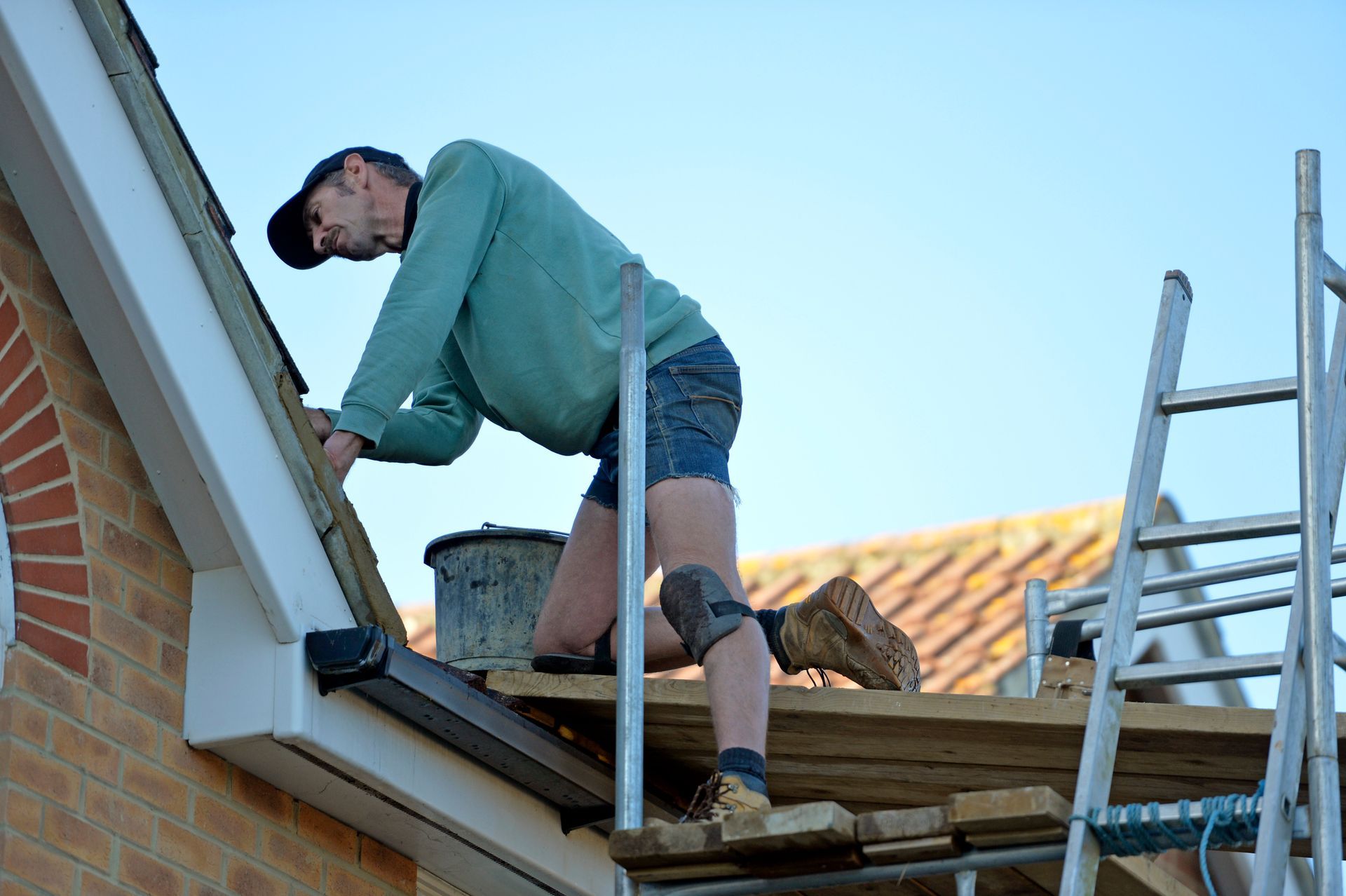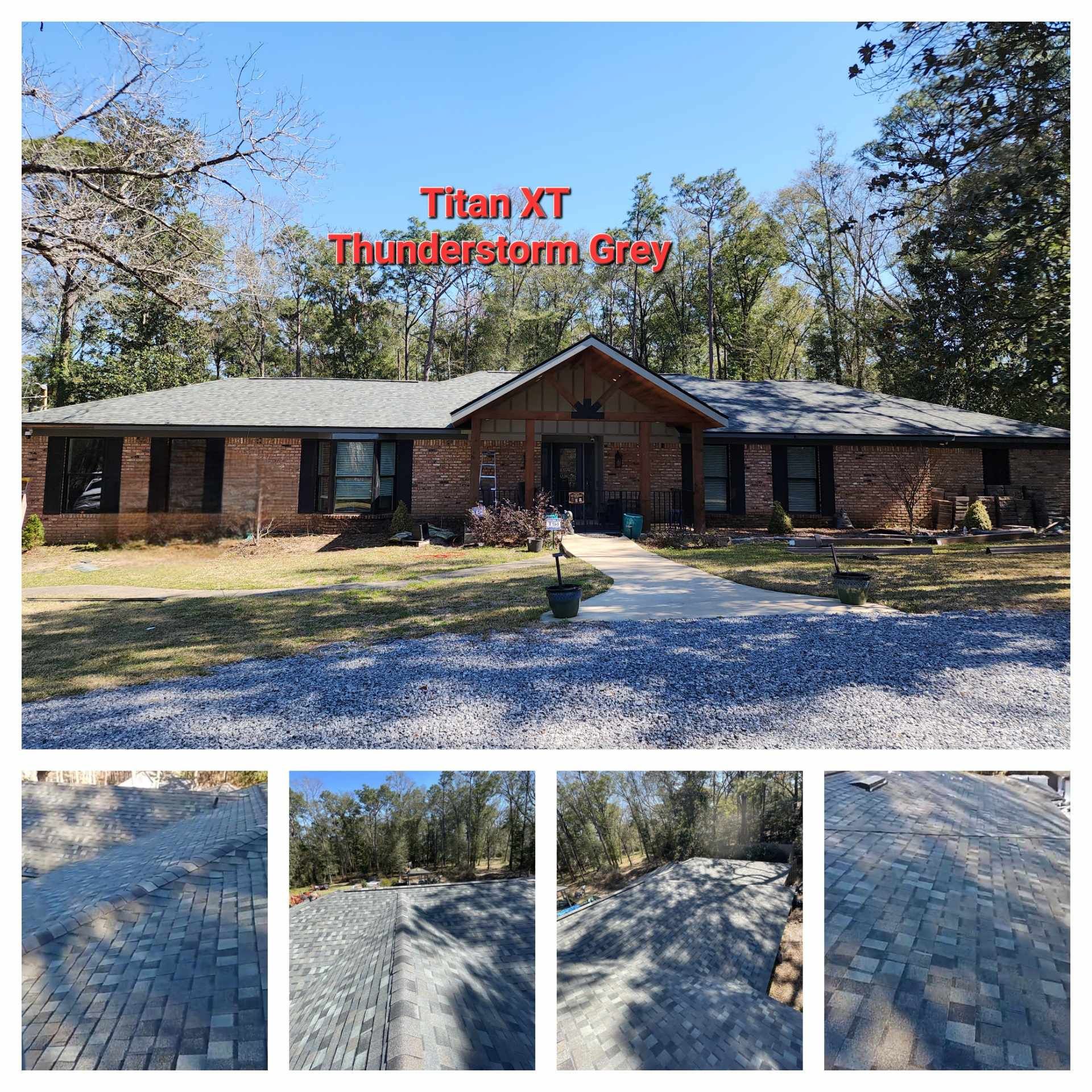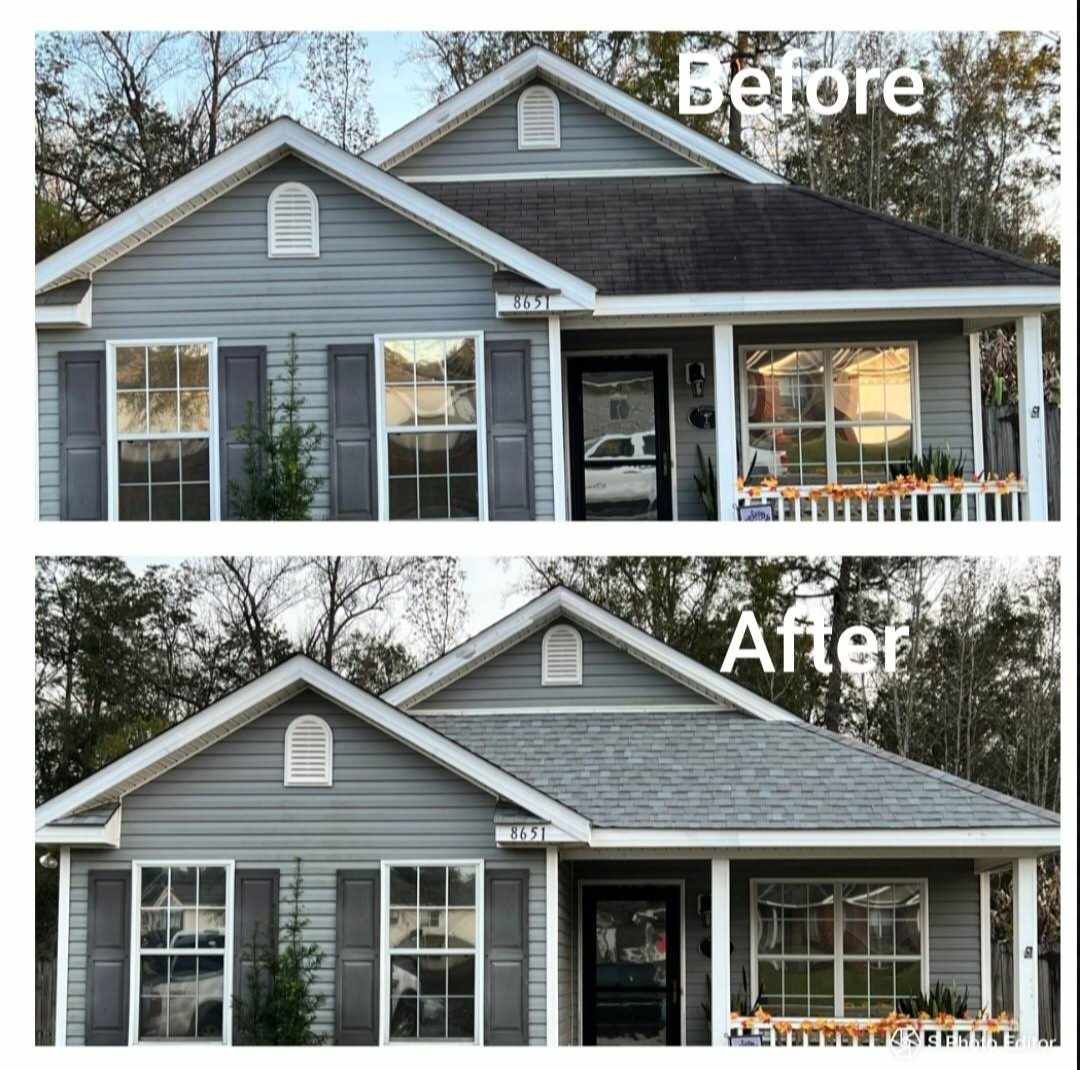Blog
Blog

16 Apr, 2024
Mobile, Alabama, like many coastal regions, is susceptible to severe weather, including hurricanes, tropical storms, and strong thunderstorms. These weather events can cause significant damage to roofs. Here are some of the potential impacts storms can have on roofs in Mobile, Alabama: 1. Wind Damage: High winds associated with storms can loosen or tear off shingles, tiles, or other roofing materials. In extreme cases, it can even lift entire sections of the roof, especially if the roof was not properly installed or maintained. 2. Flying Debris: During a storm, debris such as tree branches, palm fronds, or even airborne objects can strike roofs, causing punctures, dents, or cracks in roofing materials. 3. Water Leakage: Heavy rain and wind-driven rain can find its way through even small openings in the roof, leading to water leaks. Over time, this can cause water damage to the roof structure, insulation, ceilings, and walls. 4. Hail Damage: While less common in Mobile compared to some other regions, hailstorms can still occur. Hail can cause dents, cracks, or even holes in roofing materials, compromising their integrity and allowing water to seep through. 5. Storm Surge: I n the event of a hurricane or tropical storm, storm surge can cause flooding in coastal areas, potentially leading to water damage to roofs and other parts of the home. To mitigate the risk of storm damage to roofs in Mobile, Alabama, homeowners should ensure their roofs are properly installed, regularly inspected, and well-maintained. Additionally, using impact-resistant roofing materials and securing loose objects in the yard can help reduce the risk of damage during storms.

28 Mar, 2024
Fortified roofing repair refers to the process of repairing or upgrading a roof to meet the standards set forth by the Insurance Institute for Business & Home Safety (IBHS) Fortified Home program. The Fortified Home program is designed to improve the resilience of homes against natural disasters, particularly hurricanes, high winds, and severe storms. Fortified roofing repair typically involves several key components: 1. Roof Deck Reinforcement: The roof deck, which is the structural foundation of the roof, may need reinforcement to withstand high winds and other extreme weather conditions. This reinforcement may involve adding additional layers of decking material or installing stronger fasteners to secure the existing deck. 2. Roofing Materials: The choice of roofing materials is crucial in fortified roofing repair. High-quality, impact-resistant roofing materials such as asphalt shingles, metal roofing, or clay tiles are often recommended to enhance the durability and longevity of the roof. 3. Roofing Attachment: Proper attachment of roofing materials is essential for withstanding high winds. This may involve using special fasteners or adhesives to securely attach the roofing materials to the roof deck, reducing the risk of uplift during storms. 4. Sealing and Flashing: Ensuring a watertight seal around roof penetrations such as vents, chimneys, and skylights is critical in fortified roofing repair. Proper installation of flashing and sealants helps prevent water intrusion and reduces the risk of roof leaks and water damage. 5. Hurricane Straps or Clips: Installing hurricane straps or clips to secure the roof to the home's framing can significantly enhance the roof's resistance to uplift and wind damage. These metal connectors help anchor the roof to the structure, improving overall structural integrity. 6. Inspection and Certification: After completing fortified roofing repairs, a thorough inspection is typically conducted to verify compliance with Fortified Home standards. Once the roof meets the program requirements, it may receive certification, which can lead to potential insurance discounts and other benefits. Overall, fortified roofing repair aims to strengthen roofs and enhance their resilience against extreme weather events, reducing the risk of damage to homes and improving safety for occupants. It's an investment in long-term protection and peace of mind for homeowners in areas prone to hurricanes and severe storms.

11 Mar, 2024
In Mobile, Alabama, the timing for roof replacement depends on various factors, including the age and condition of the roof, the type of roofing material used, and local weather patterns. Here are some general guidelines for determining when to have your roof replaced: 1. Age of the Roof: Most asphalt shingle roofs, which are common in Mobile, have a lifespan of 20 to 30 years. If your roof is approaching or has exceeded this age range, it may be time to consider replacement, even if there are no visible signs of damage. 2. Visible Signs of Damage: Inspect your roof regularly for signs of wear and damage, such as missing or damaged shingles, curling or buckling shingles, cracked or deteriorating roofing materials, or leaks in the attic or ceiling. If you notice any of these issues, it's essential to address them promptly to prevent further damage and determine whether repair or replacement is necessary. 3. Storm Damage: Mobile is prone to severe weather events such as hurricanes, heavy rains, and windstorms, which can cause significant damage to roofs. After a severe storm, it's crucial to inspect your roof for any damage, such as missing shingles, hail damage, or leaks. If your roof has sustained extensive storm damage, it may need to be replaced. 4. Leaks and Water Damage: If you experience frequent leaks or water damage inside your home, it could indicate underlying issues with your roof's integrity. Roof leaks can lead to mold growth, wood rot, and structural damage if left untreated. In such cases, it's essential to have your roof inspected by a professional to determine the extent of the damage and whether replacement is necessary. 5. Energy Efficiency: Older roofs may lack proper insulation and ventilation, leading to higher energy bills and reduced comfort indoors. If you notice significant fluctuations in indoor temperature or increased energy costs, it may be worth considering a roof replacement with improved energy-efficient materials and insulation. 6. Granule Loss: Asphalt shingles commonly experience granule loss over time, especially as they age. If you notice excessive granules accumulating in your gutters or downspouts, it could indicate that your shingles are reaching the end of their lifespan and may need to be replaced. 7. Professional Inspection: It's recommended to have your roof inspected by a qualified roofing contractor every 1-2 years, especially if your roof is older or has experienced severe weather events. A professional inspection can identify any issues early on and help determine whether repair or replacement is necessary. Ultimately, the decision to replace your roof in Mobile, Alabama, should be based on a combination of these factors, along with the advice of a qualified roofing professional. Regular maintenance, timely repairs, and proactive monitoring can help prolong the life of your roof and ensure the safety and integrity of your home.

22 Feb, 2024
In the realm of roofing solutions, the options can seem overwhelming. From traditional asphalt shingles to metal roofing and beyond, homeowners are faced with a multitude of choices when it comes to protecting their homes from the elements. Among these choices, fortified roofing stands out as a modern and innovative option that offers a range of benefits. In this blog post, we'll explore the key differences between fortified roofing and other types of roofing materials, shedding light on why fortified roofing may be the superior choice for many homeowners.
BROWSE OUR SITE
BUSINESS HOURS
- Monday
- -
- Tuesday
- -
- Wednesday
- -
- Thursday
- -
- Friday
- -
- Saturday
- Closed
- Sunday
- Closed
Content, including images, displayed on this website is protected by copyright laws. Downloading, republication, retransmission or reproduction of content on this website is strictly prohibited. Terms of Use
| Privacy Policy








